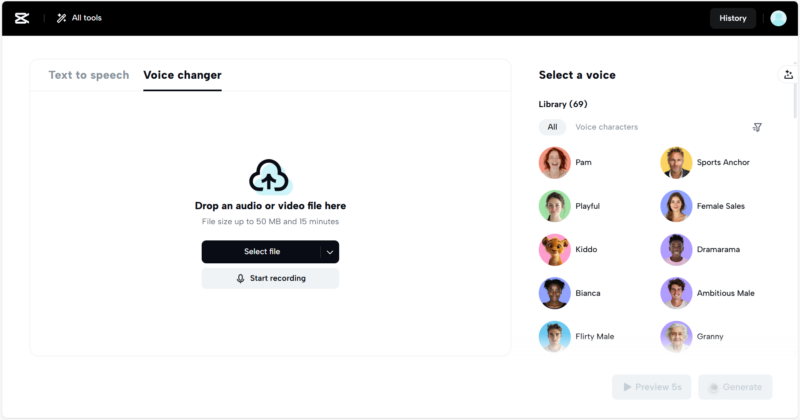
Real estate investing can be a lucrative way to build wealth and generate passive income. One popular investment strategy is utilizing a 1031 exchange, a tax-deferral tool that allows investors to sell a property and reinvest the proceeds in a “like-kind” property without paying capital gains taxes. However, choosing the right 1031 exchange options is crucial to maximize returns and achieve long-term success.
In this article, we’ll take you on a thrilling journey into the world of 1031 exchanges and show you how to choose the best property options for your investment goals. We will also discuss the benefits of using a qualified intermediary as well as factors to consider and provide tips to help you make informed decisions.
Understanding 1031 Exchange Rules and Requirements
The 1031 exchange is available to individual investors, businesses, and trusts. To qualify for the tax deferral, you must meet certain criteria, including:
The Property Must Be a Qualifying, “Like-Kind” Asset
One of the most important 1031 exchange requirements is that the properties involved must be “like-kind.” This means that both the original property being sold and the replacement property being purchased must be of the same nature or character. For example, an apartment building can be exchanged for another apartment building but not for a warehouse or a piece of vacant land.
Invest the Money Within 180 Days
The replacement property must also be purchased within 180 days of selling the original property, although the closing date can be extended up to 240 days if certain conditions are met.
You Cannot Use Either of the Properties for Personal Use
Both 1031 exchange properties must be held for investment or business purposes, not personal use. If you use either of the properties as a primary residence for more than 14 days or 10% of the rental period within any year, then it will not qualify for 1031 exchange benefits.
Take Note of Depreciation Taxes
When you reinvest the money from a 1031 exchange, you may be subject to depreciation recapture tax on any gain from depreciating the original property. This means that if your original property has been depreciated over a number of years, some of the profit from selling it will be taxed as ordinary income instead of capital gain.
Reinvest the Entire Proceeds
The money from the sale of the original property must be reinvested into a new, qualifying 1031 exchange property in order for it to qualify for tax-deferral benefits. This means that you cannot use any of the funds to pay off debt or purchase personal items; they must all be reinvested in a new investment.
45-day and 180-day Identification Periods
Once the original property is sold, you have 45 days to identify up to three replacement properties and 180 days to complete the transaction. During this time, it’s important to do your research and choose wisely, as you cannot change or add any additional properties once the exchange has been initiated.
Exploring 1031 Exchange Options
When doing a 1031 exchange, there are various options to explore depending on an investor’s needs and goals. Here are some of the most common 1031 exchange options:
Delayed Exchange
A delayed exchange is the most common type of 1031 exchange, where the investor sells their original property and then has up to 180 days to acquire a new property that meets the like-kind requirement.
Reverse Exchange
A reverse exchange is a less common type of 1031 exchange, where the investor acquires the replacement property before selling their original property. The replacement property is held by an Exchange Accommodation Titleholder (EAT) until the original property is sold.
Simultaneous Exchange
A simultaneous exchange involves the sale and purchase of properties on the same day. While this type of exchange is rare, it can be useful in situations where the seller and buyer agree to exchange properties directly.
Improvement Exchange
An improvement exchange is a type of delayed exchange where the investor uses some of the proceeds from the sale of their original property to make improvements to the replacement property. This allows the investor to upgrade to a higher-value property and defer more capital gains taxes.

Be sure to consider your 1031 exchange options carefully and consult a qualified tax adviser or financial professional for guidance. The best 1031 exchange options will vary depending on an investor’s individual goals and risk tolerance, so it’s important to do your research and make informed decisions.
The Benefits of NNN Properties for a 1031 Exchange
NNN properties are becoming increasingly popular among investors who are looking for a low-risk, passive, long-term investment with steady cash flow. One of the major benefits of NNN properties for a 1031 exchange is that they allow investors to defer capital gains taxes on the sale of their original property while still generating income from a reliable tenant.
Some of the other benefits of NNN properties for a 1031 exchange include the following:
Potential for Capital Appreciation
NNN properties can appreciate in value over time, providing investors with increased financial security.
Lower Management Requirements
With a NNN lease, the tenant is responsible for all property expenses, including property taxes, insurance, and maintenance. This means that the landlord has fewer responsibilities and costs associated with managing the property.
Predictable Income
NNN leases typically provide a steady, predictable income stream with little to no vacancy risk. This can help investors generate consistent cash flow and plan for long-term financial growth.
Diversification
Investing in NNN properties can help investors diversify their portfolios and reduce overall risk. By spreading investments across different properties and tenants, investors can minimize the impact of any one tenant leaving or property value declining.
Key Factors to Consider When Choosing a 1031 Exchange Property
Choosing a 1031 exchange property is an important decision that can have far-reaching consequences for your financial future. Here are some key factors to consider when selecting a property:
Location
The location of the property is critical in ensuring long-term appreciation and growth. Consider areas with strong job markets, growing populations, and access to amenities such as shopping, dining, and entertainment. Additionally, look for locations with stable or growing property values. Consider the property’s proximity to major transportation hubs like airports, highways, and public transportation. You can also use demographic data to learn about the area’s population, income levels, and other factors that could impact demand for rental properties.
Tenant Creditworthiness
Evaluate the financial stability and creditworthiness of the tenant(s) occupying the property. Look for tenants with a history of on-time rent payments, solid track records in their industry, and strong credit ratings. Request credit reports, financial statements, and other documentation to verify tenant creditworthiness. You should also research the tenant’s industry and competition to determine whether the tenant is likely to remain viable in the long term.
Lease Terms
Carefully review the lease terms to ensure they meet your investment goals and objectives. Consider factors such as lease length, rental rate increases, renewal options, and tenant responsibilities for property maintenance and repairs. Work with a qualified intermediary or real estate professional to negotiate favorable lease terms.
Property Condition
Thoroughly inspect the property and evaluate its physical condition, including any needed repairs or upgrades. Check the age of the property, major appliances, and systems like HVAC and plumbing when evaluating its overall condition. Consider hiring a professional inspector to assess the property’s systems, structure, and safety features. Determine whether any repairs or upgrades are necessary before closing the sale and factor those costs into your investment analysis.
Timing Your 1031 Exchange for Maximum Return
Timing is a crucial aspect of a successful 1031 exchange, and it can have a significant impact on an investor’s return. In a 1031 exchange, investors sell their original property and use the proceeds to purchase a like-kind replacement property, deferring any capital gains taxes owed on the original property’s sale.
If an investor does not complete the transaction within the IRS’s strict timeline requirements, they risk losing the tax-deferred status of the exchange and could be required to pay capital gains taxes on the original property’s sale.
Additionally, timing can play a critical role in an investor’s ability to maximize their returns. In some cases, waiting too long to identify and acquire a replacement property could result in lost opportunities and missed returns. Moving too quickly without proper due diligence and analysis could lead to poor investment decisions and lower overall returns.
To effectively time a 1031 exchange, investors must:
- Start the process early. The 1031 exchange timeline typically begins when investors enter into a binding contract to sell their original property, so it’s important to start planning early. Work with a qualified intermediary and begin researching potential replacement properties as soon as possible.
- Understand the timeline requirements. Make sure you are familiar with all IRS timeline requirements and regulations for 1031 exchanges. This includes the 45-day identification period, the 180-day exchange period, and any other rules that may apply to your situation.
- Research properties thoroughly. Before investing in a replacement property, do your due diligence to ensure it meets all of your investment criteria and goals. Research local market conditions, analyze comparable sales, consult with experts, and review legal documents to determine whether the property is a good fit.
The Benefits of Using a Qualified Intermediary for Your 1031 Exchange
A Qualified Intermediary is a neutral third party who facilitates the 1031 exchange process. Their primary responsibility is to hold the proceeds from the sale of the relinquished property and then use those funds to acquire the replacement property. By acting as an intermediary, they help ensure compliance with the strict 1031 exchange rules and regulations set forth by the Internal Revenue Service (IRS).
Below are some of the key benefits of using a qualified intermediary:
- Peace of Mind. Working with a qualified intermediary can provide peace of mind, knowing that you are in compliance with IRS regulations and have an expert guiding you through the 1031 exchange process.
- Time Savings. An intermediary help streamline the 1031 exchange process, saving time by helping you identify replacement properties, negotiate favorable lease terms, and perform other administrative tasks.
- Tax Savings. An intermediary can help ensure that you are taking advantage of all available tax benefits and deductions when completing your 1031 exchange.
- Security. A qualified intermediary will hold the proceeds from the sale of your relinquished property in a secure escrow account, ensuring that you remain in compliance with IRS rules. Additionally, they provide an additional layer of security against fraud or theft.
The Bottomline
Now that you understand the rules, requirements, and incredible benefits of these exchanges, it’s time to consider your options. Explore the wide variety of NNN properties available, from medical offices to retail stores and restaurants.
Whether you’re eyeing medical offices, retail stores, or even restaurants, each property type brings its own flavor to the table. Just remember to consider location, tenant quality, and property condition before diving in headfirst. It’s all about finding the perfect match, like finding that elusive soulmate on a dating app (but with much higher financial stakes).
It’s time to explore the diverse range of 1031 exchange options. Say goodbye to those capital gains taxes, and hello to a world of maximizing your return.




